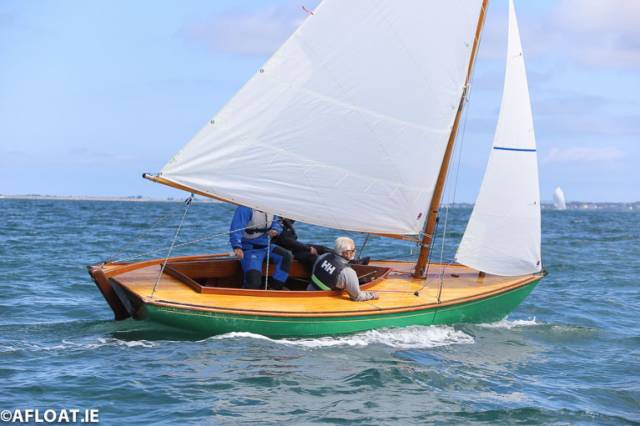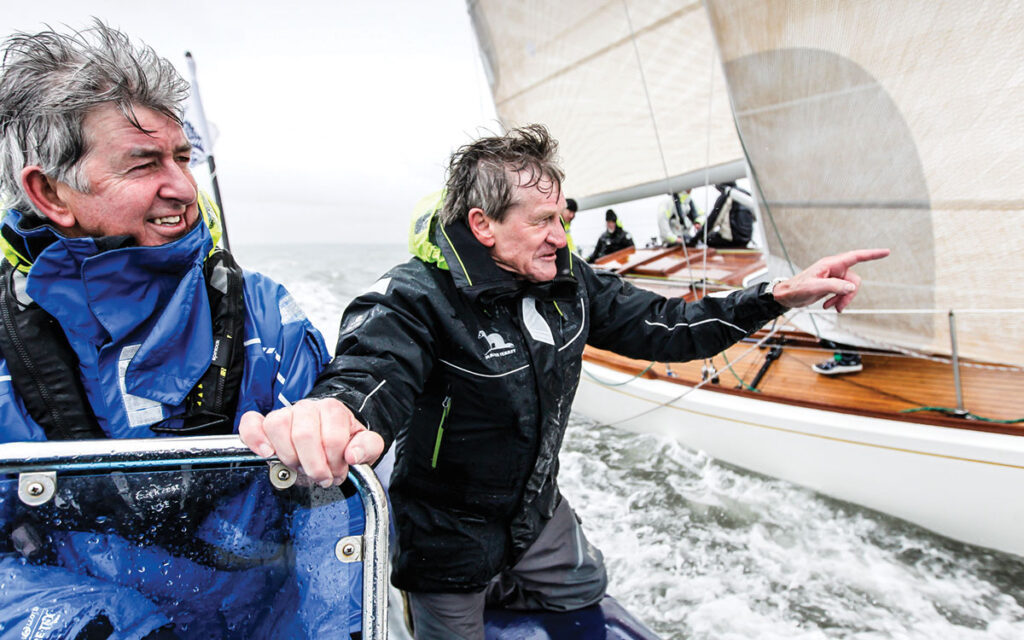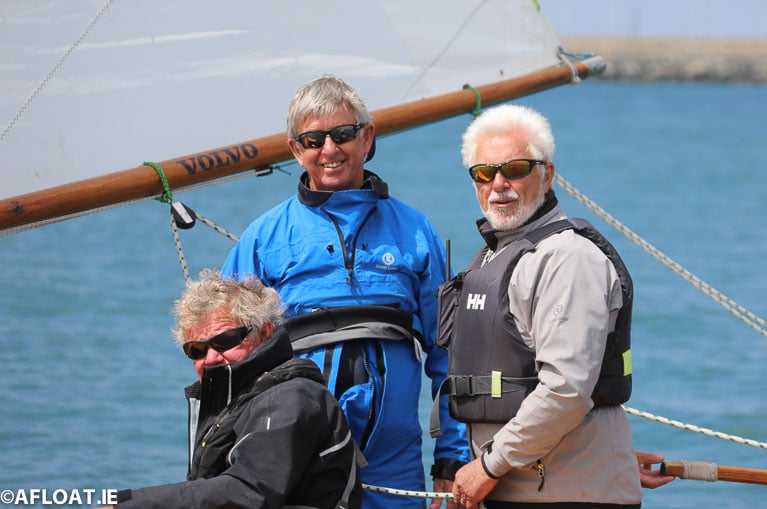Few sailors embody the depth and breadth of experience that Eddie Warden Owen brings to the sport.
From his early days sailing in Holyhead, where his father was a shipwright and founding member of the local club, through Olympic campaigns, Admiral’s Cups, America’s Cup challenges and his leadership at the RORC, Eddie has left a lasting mark at every level of sailing. Yet alongside this remarkable career, Eddie has also returned to his roots, racing the Seabird Half Rater — one of the world’s oldest one-design classes — with the same passion and energy that first drew him to the water. We are honoured to feature Eddie in our Meet the Sailors series, sharing his reflections on the Seabird class, his background in sailmaking, and his connection with Sanders Sails.



You’ve sailed at the very top levels of the sport, from Admiral’s Cups to America’s Cups. What first drew you to the Seabird Half Rater, and what is it about the class’s history and heritage that continues to inspire you today?
The Seabird is more about our family relationship with the class after the 2nd World War. After a diving accident that curtailed my father’s work underwater, he went to work for wealthy industrialist Pat Hall who had an interest in sailing in Trearddur Bay – just outside Holyhead – where I grew up after the war. My father’s woodworking skills were put to good use restoring tired Seabirds that Pat Hall bought from Wallasey and Abersoch to supplement the growing fleet in Trearddur Bay. Although it is not the first boat I raced, (they were Cadets and GP14’s in Holyhead), I was often called upon to crew in Seabirds. The class was conceived in 1898 and is regarded as the oldest one design class in the UK. My brother David and I bought the partially restored Scoter (No 6) in 1996 and had her completed in time for the centenary regatta in 1999, held in the Menai Straits. The 20-foot-long Seabird has ballast and a metal centerplate, is gaff rigged with a small jib and spinnaker and is more of a dinghy than keelboat to race. Racing in Trearddur Bay is only held for the month of August and has become an annual ritual over the 26 years we have had the boat. David and I love the racing in Trearddur which is challenging with strong tidal current, rocky outcrops to navigate and the competition is fierce with 30 boats in the fleet.
You’ve worked with Sanders sails across a variety of boats — how important is it for you to have a sailmaker you can talk to directly, and what has that relationship brought to your sailing?
Sanders were appointed to the Seabird class because of their experience with the X One Design, another vintage class that I also race, and are open to ideas and suggestions. Over the many years we have been working together we have made step-by-step improvements to the sails to suit the conditions of wind and waves in Trearddur Bay. Chris and his father Pete always make time to talk to customers and listen to new ideas.
Do you think it is important for British sailing that companies like Sanders continue to design and manufacture sails here in the UK, rather than relying on overseas production?
Seabird restrictions on the use of modern sail materials means we have to go back to the basics of sailmaking. I like the fact that I can go to the Sanders loft in Lymington, touch and feel the materials being used and understand how they influence the computer sail design and the adjustments needed to get the best from the sails when racing. Price competition has required many sailmakers to outsource their production much of which is done overseas. This restricts the ability of the sailmaker to react quickly to customers’ needs, which Sanders can do.
Having been a sailmaker yourself, do you find that experience influences the way you approach racing and sail trim today? Does it give you a different perspective on the sails you use?
Sail materials have changed dramatically since I started sailmaking in the 70’s so too has yacht design and both have influenced sail design and how to trim sails. Therefore, the setting of sails varies dramatically on different boats. Today’s dinghies and one designs come with a tuning sheet which is a good starting point and gets you up to speed quickly but can never make up for time in the boat and the understanding you get when racing against others. I am always surprised when sailors don’t have marks on sheets and halyards to accurately reproduce fast settings.
Looking ahead, what are your plans for the rest of this season and into 2026 — and what excites you most about the sailing you have ahead?
I was delighted to have participated in the revitalised Admirals Cup in Cowes this summer sailing for the Royal Irish Yacht Club as tactician on the JPK 1180 Sunrise. This was 22 years after I last competed in the event, and it was good to see the Solent and Cowes Yacht Haven a buzz of activity with top race yachts and some of the best sailors in the world competing. I revert to sailing a Laser in the Hamble River during the Autumn and Winter which is good for strength and agility, and I also race an International One Meter radio-controlled model yacht at a very well organised Club in Gosport. Both activities keep me race sharp and are very social activities. I have nothing serious planned for 2026 but sailing with friends is a high priority.
